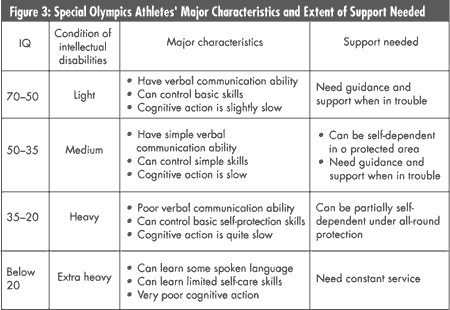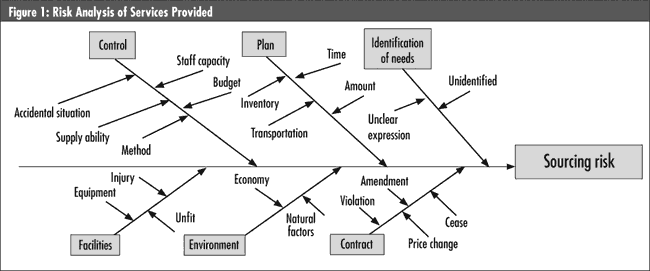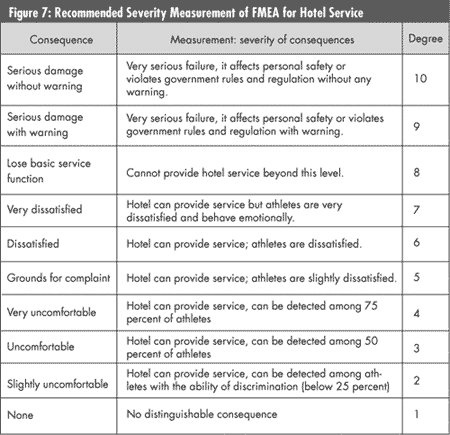| by Tang Xiaofen
Funded by Eunice Kennedy Shriver, the younger sister of former U.S. president John F. Kennedy, Special Olympics Inc. was established as a nonprofit organization to provide individuals with intellectual disabilities with sports training and athletic competition, based on the Olympic tradition and spirit. The key concepts of the Special Olympics (SO) are "participation, equality and sharing." Its mission is to improve the living quality of people with intellectual disabilities and to provide them with opportunities to join in social activities, benefit their communities and gain respect from society.
The upcoming 2007 Shanghai Special Olympics World Summer Games are significant because they will mark the first time such an event will have been held in a developing country such as China. Their success will not only indicate the progress made in human rights causes in China but also help promote SO activities in other developing countries.
This article provides a qualitative-quantitative analytical model for service providers to the Special Olympic World Summer Games. To help ensure quality of service and a smooth operation of the games, some of the tools used include event-tree analysis, the Graham-Kinney method, failure modes and effects analysis (FMEA) and other methods to analyze customer requirements, scope, risk and ways to improve organizational management.
Because the main focus of the SO is the athletes themselves, it's appropriate to first analyze their needs, investigate service providers to determine an appropriate management plan to deliver their requirements and, finally, confirm that the service provided at the games will be applicable to the athletes and conform to the plan established. Because SO athletes are affected by intellectual disabilities and physical limitations, their support needs vary considerably, but in general they share the following characteristics:
• Difficulty focusing attention
• Poor memory
• Underdeveloped language skills
• Difficulty with abstract thinking
• Limited willpower
By analyzing the characteristics of different SO athletes, it's possible to identify the extent of support they might need, as shown in figure 3 below.

There are various service organizations involved in the SO, including government departments, nonprofit organizations and for-profit companies. In light of the characteristics of SO athletes and events, an analysis was required of service organizations in terms of their scope, risk and effect on the games.
• Scope of service . Based on the flow of events during the games, event-tree analysis proved useful in confirming the scope of services, which includes reception, volunteers, medical support, information, security and language.
• Risks in providing services . Because of the wide range of services and varied professions involved, risks do exist in providing services during the games. Brainstorming was used to list possible risks and to focus the analysis on identifying needs, planning and quality control.
Existing risks in providing services can be divided into two categories, external and internal. External risks include service contracts, fees and unforeseen risks; internal risks include identifying needs, planning and quality control. Risk analysis provided a foundation for analyzing the potential effects of services on the SO, as illustrated in the fishbone diagram seen in figure 1 below.

• The effect of service providers on the SO. Because of these potential risks, the SO could be affected if service providers are unable to meet the requirements of the individual services. Because of the scope of services, means, staff, environment, etc., the extent of the effect of service providers varies. The analytical methods of Kenneth Graham and Gilbert Ford Kinney were used to ensure that data were scientific, easy to control and appropriate. A group consisting of experts familiar with the SO's service needs was set up to define the scoring standard. The range of effects (L) is shown in figure 4; the frequency of effect (E) is shown in figure 5; and the severity of consequences (C) is shown in figure 6.



To classify the extent of a service provider's effect (D) depends on the possibility and frequency of the effect, the frequency of the effect and the severity of the consequences. Assuming D = LEC, services can be divided into three levels when analyzing the extent of their effect on the SO. Thus:
Level A: D > = 160 or C = 100
Level B: 70 < = D < = 160
Level C: D < = 70
Service level A represents the most serious level of effect and would include risks such as injuries, damages and illnesses that could affect normal activities. Service level B is a moderate level of effect and would include risks that wouldn't cause a break in SO activities. Service level C is a minor level of effect with little or no risk to participants and activities.
For service levels A and B, which could have serious and moderate effects, respectively, an FMEA should be done prior to performing the service. FMEA measurements should first be set up to indicate severity, occurrence and detection before analyzing the service-providing process. Take the measurement of severity as an example derived from hotel services. (See figure 7.)

Based on established measurements, an example of an FMEA implementation (using hotel service as an example) is shown in figure 2.

FMEA analysis and the results shown in figure 2 indicate that the management of service providers should focus on risk priority numbers (RPN) and severity, and raise improvement requirements for service providers when necessary.
Three methods for improving SO services are:
• Focus on the SO athletes . Historically, people with disabilities were regarded as encumbrances to their families and society. Along with a developing economy comes the responsibility to support these people and, as far as possible, address their problems. This is an important dimension for assessing the level of social responsibility. It's important to promote awareness of the disabled by various means, including the Special Olympics, so that more people will see the value of volunteering for these events. At the same time, according to their scope and means, service providers should conduct training to help society at large understand the needs of people with intellectual disabilities. This should serve as the basis for improving service.
• Improve service skills . In addition to furthering society's understanding of people with disabilities, training in practical skills for use during the games should be encouraged. Take language needs, for example. The SO is a worldwide athletic event that requires the use of five languages, as well as sign language for athletes with difficulties hearing and/or expressing themselves. Indispensable service techniques such as this will guarantee smooth operation of the SO. Providing professional training to service personnel is an effective approach.
• Improve facilities. It's important to pay attention to the suitability of facilities and infrastructure for people with mental or physical disabilities. For example, it might be necessary to add facilities or improve current ones, such as removing barriers at elevators and in rooms. Improving facilities can help eliminate risk and maintain high service quality.
In general, the type of management required for service providers should be based on the results of FMEA; different services will have different measures, such as the following:
• When the degree of severity ≥ 9 or RPN ≥ 100, and RPN ≥ 200 in two items, corrective actions should be taken and FMEA performed again. Services shouldn't be provided until the requirements are met.
• When 100 ≤ RPN ≤ 200, measures should be taken and service shouldn't be provided until any identified risks are reduced or eliminated.
• When RPN ≤ 100, potential risks by service providers, along with relevant preventive measures, should be indicated in advance.
• For C-level service providers, FMEA isn't required before providing services. However, any potential risks by service providers should be indicated as far as possible.
The Special Olympics World Summer Games is a worthy activity that can have worldwide influence. Managing the quality provided by service organizations will directly affect the success of the games and in turn encourage a global awareness of people with special needs.
Tang Xiaofen is a professor and president of the Shanghai Academy of Quality Management, with years of experience in quality management, theoretical study and the practice of quality science. Madame Tang has written more than 10 books and 30 papers, and organized the translation of five books. She's made significant contributions in promoting quality management in China.
|